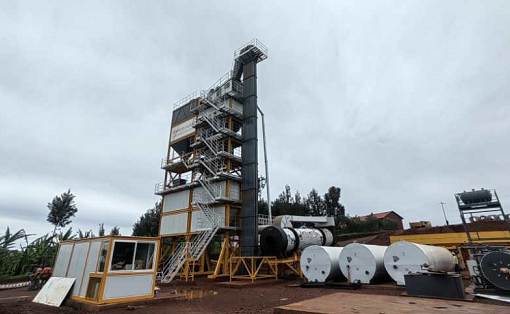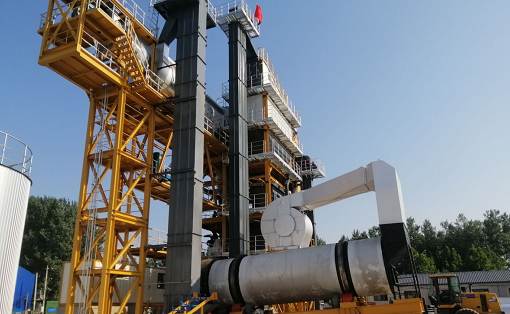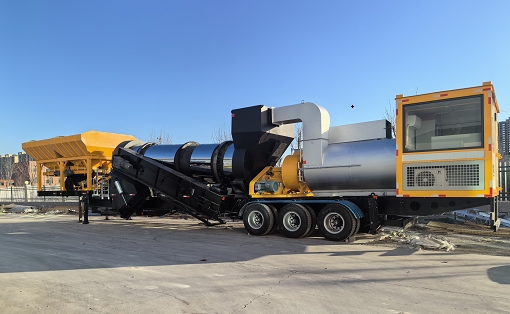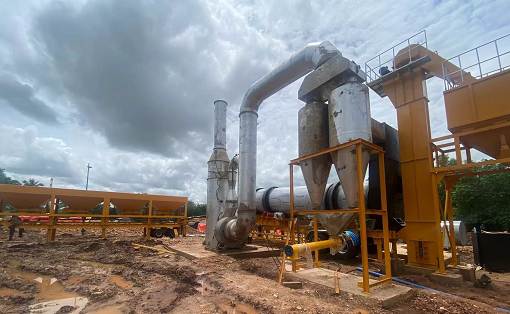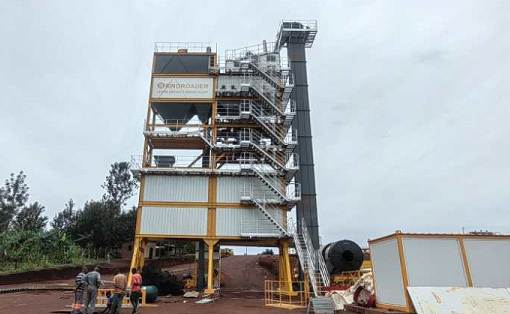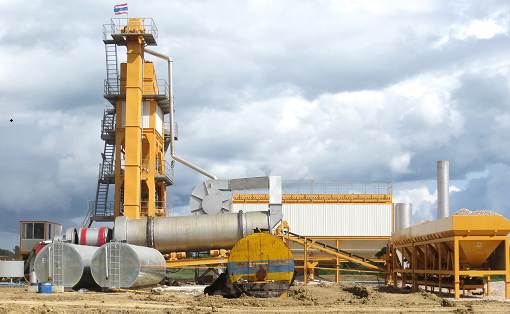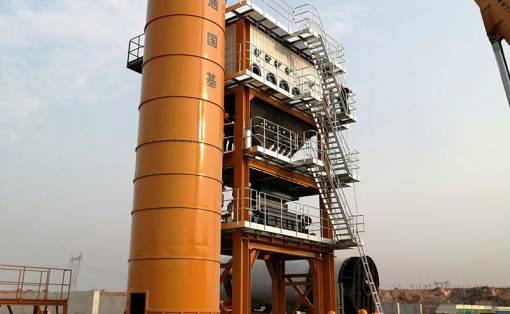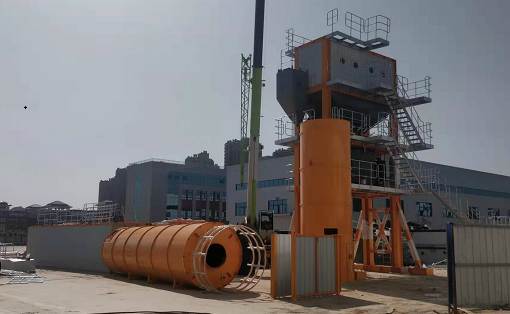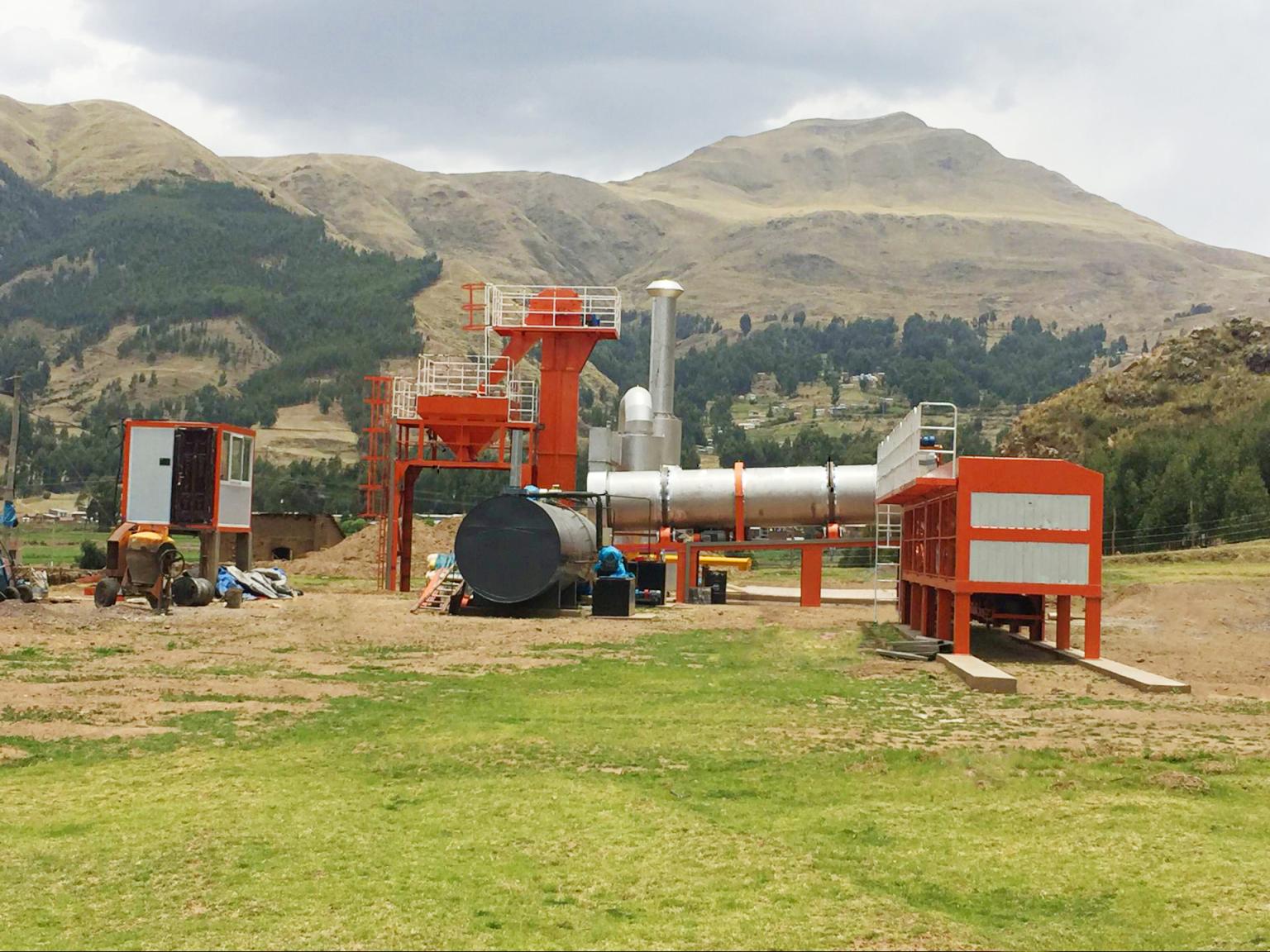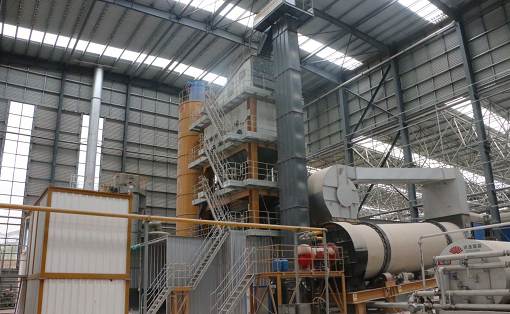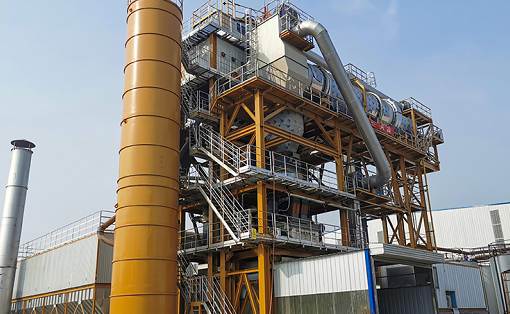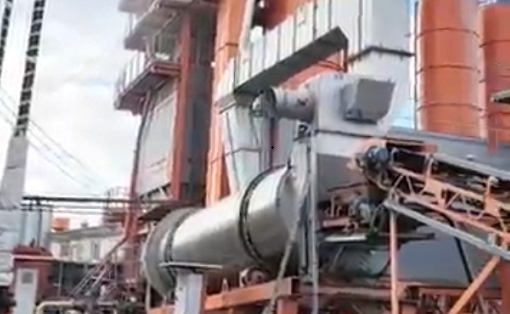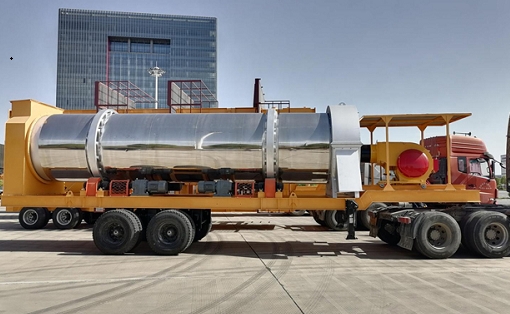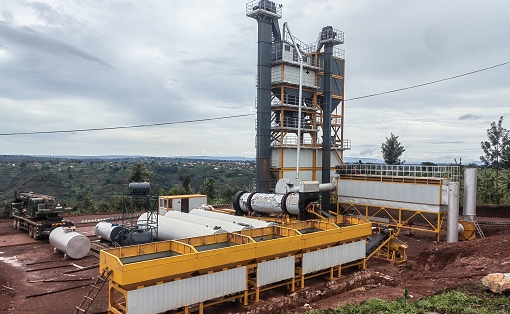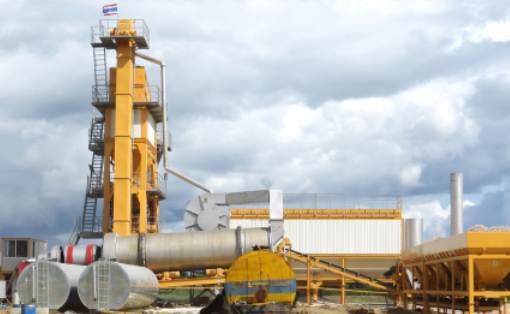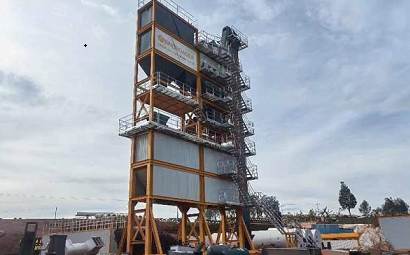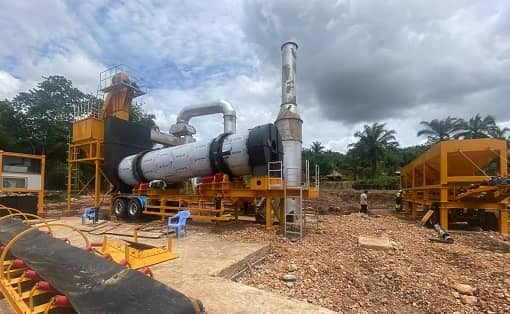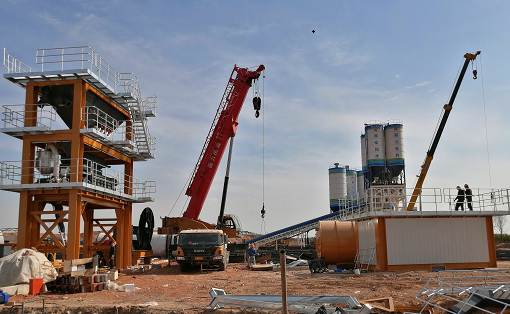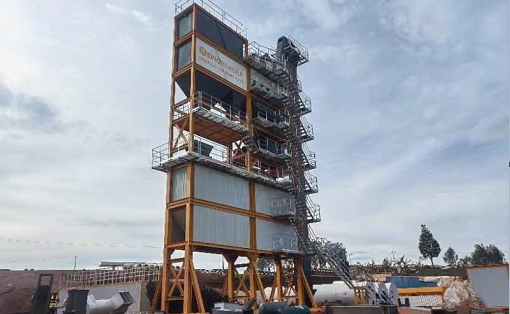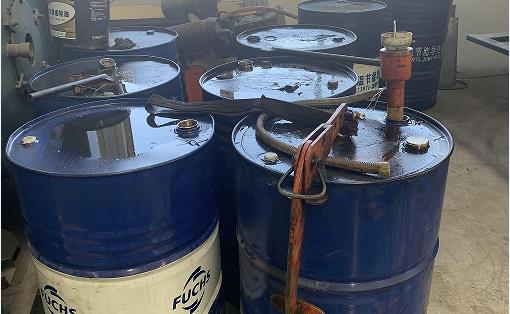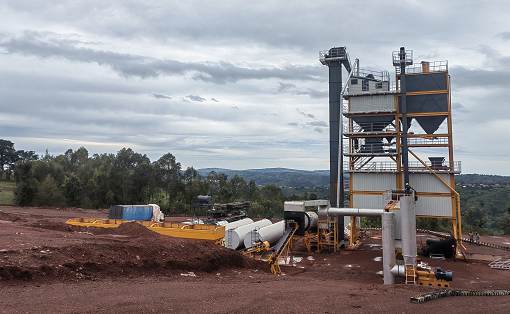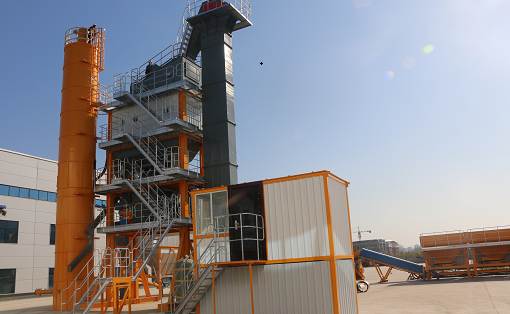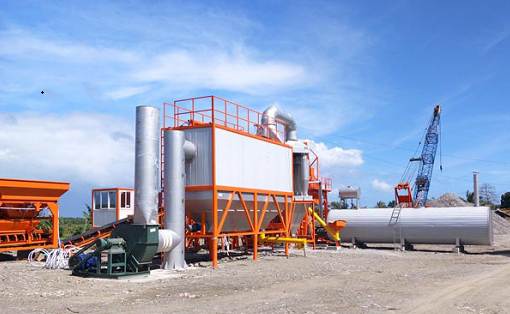Analysis of excessive overflow in asphalt mixing plants
1. Causes of overflow
The main causes of spillage are:
1) Mixing materials in cold silo. Cold material warehouses generally have 5 or 4 warehouses. Each warehouse is required to contain pellets of a certain specification. If cold materials of different specifications are mixed or mistakenly loaded during the loading process, it will cause certain occurrences in a certain period of time. The shortage of pellets of one specification and the overflow of pellets of another specification can easily destroy the supply balance between hot and cold silos.
1. Causes of overflow
The main causes of spillage are:
1) Mixing materials in cold silo. Cold material warehouses generally have 5 or 4 warehouses. Each warehouse is required to contain pellets of a certain specification. If cold materials of different specifications are mixed or mistakenly loaded during the loading process, it will cause certain occurrences in a certain period of time. The shortage of pellets of one specification and the overflow of pellets of another specification can easily destroy the supply balance between hot and cold silos.
2) The particle composition of the same specifications of raw materials has great variability. Since there are few large-scale gravel yards on the market, different specifications of gravel are required for road surfaces, and the models and specifications of gravel crushers and screening machines used in each quarry are different. Therefore, they are purchased from different gravel yards. NKE is nominally The particle composition of gravel of the same size has a large variability, making it difficult for the mixing plant to control the supply balance during the mixing process, resulting in a surplus or shortage of a certain size of stone.
3) Selection of hot silo screen. Theoretically, if the gradation of the hot silo is stable, no matter how large the sieve holes are set up, it will not affect the gradation of the mixture. However, the screening of the hot silo in the mixing floor has the ability to reduce and not expand the particle size. Therefore, pellets of a certain size may be mixed with pellets smaller than their own size. The amount of this content often has a great impact on the selection of screens in the mixing plant and whether there is overflow. If the mixture curve is very smooth and the screen is properly selected, the finished materials produced in the mixing plant can ensure gradation without overflowing. Otherwise, the overflow phenomenon will be unavoidable and even serious, which will cause large material waste and economic losses.
2. Consequences
When overflow occurs, the following consequences will occur:
1) The mixture gradation is too fine. It can be seen from the aforementioned weighing process that when the hot silo overflow is finer aggregates, larger aggregates, etc., the finer aggregates will be weighed to a predetermined quantity or exceed this quantity range, while the larger aggregates will be weighed to a predetermined quantity or exceed this quantity range, while the larger aggregates will The material will be closed when the predetermined weighing quantity is reached, resulting in insufficient compensation and making the entire mixture or part of the screen finer. Taking four hot silos as an example, the screen ranges of 1#, 2#, 3#, and 4# hot silos are 0~3mm, 3~6mm, 6~11.2mm, and 11.2~30mm respectively. When 3# When the warehouse overflows and the 4# warehouse waits for materials, the 3# warehouse will exceed the weighing range due to excessive compensation, and the 4# warehouse will not weigh enough due to insufficient compensation, resulting in coarse aggregates in the 3# warehouse and 4# warehouse aggregates. The aggregate material in the warehouse is too thin; similarly, when the 1# warehouse overflows and the 2# warehouse waits for materials, the compensation amount of the 1# warehouse flying material will be more than the setting, while the 2# warehouse will be weighed due to insufficient compensation amount. If the quantity does not reach the set quantity, the entire grading will be too thin; when the 2# warehouse overflows and the 3# or 4# warehouse waits for materials, 3~6mm will be thicker and 6~30mm will be thinner.
2) The mixture is too coarse. The coarseness of the mixture is caused by the over-weighting of the larger mesh pellets or the insufficient weighing of the smaller sieve pellets. Take the above mixing floor screen as an example: when the 1# or 2# or 3# warehouse waits for materials and the 4# warehouse overflows, the remaining warehouses will weigh accurately, regardless of any one or two of the 1#, 2#, and 3# warehouses. Or the three equal material bins cannot be weighed to the set quantity, and must be replenished by the coarser particle size of the next level, which will inevitably lead to the phenomenon of more large materials, relatively less small materials, and coarse gradation of the mixture.
The mixture gradation particle deviation is large. Overflow in the mixing plant is mainly caused by insufficient weighing of certain levels of pellets in the hot silo, resulting in overflow of materials, resulting in an excess of one or more levels of pellets with relatively sufficient quantities, resulting in overflow. The production mix ratio is obtained by screening and trial mixing in the hot silo. Generally, after the sieve hole of the hot silo is determined, theoretically speaking, the mixture gradation will not change significantly, at least close to the throughput of the sieve mesh aperture of the hot silo. should remain stable. Unless there is a string of bins in the hot material bin or the screen is broken, there will be a large deviation of the mixed material grade particles. However, it was found in construction practice that the mixture gradation is not stable after the screen aperture is selected.
3. Measures and suggestions for controlling spillage
How to control overflow is one of the key issues to be solved during the mixing process of asphalt mixture. It should be prevented from the following aspects:
1) Stable material source. The author has realized through many years of production practice that the stability of the material source is the key to overflow control. The graded gravel is unstable, resulting in a shortage or surplus of certain grades of aggregates in the mixing plant. Only when the material source is stable can the mixing plant stably control the mixture gradation, and then adjust the flow rate of the mixing plant while ensuring the gradation, so that the supply of cold materials and the demand for hot materials can reach a balance in a short time. Otherwise, the material source is unstable and a certain supply balance cannot be maintained for a long time. It takes a period of adjustment from one supply balance to another. The hot water boiler model cannot achieve the supply balance in the short term, resulting in Overflow. Therefore, to control overflow, stable material source is the key.
2) Reasonably select the hot silo screen. The selection of screens should follow two principles: ① ensure the gradation of the mixture; ② ensure as little overflow in the mixing plant as possible.
To ensure the gradation of the mixture, the screen selection should be as close as possible to the gradation control mesh size, such as: 4.75mm, 2.36mm, 0.075mm, 9.5mm, 13.2mm, etc. Considering that the mixing floor screen has a certain inclination, the screen hole size should be enlarged proportionally.
Overflow in the mixing plant has always been a difficult problem for construction units to solve. Once overflow occurs, it is difficult to effectively control it. Therefore, to ensure that there is as little overflow as possible in the mixing plant, it is important to match the material capacity of each hot bin to its discharge volume. After the laboratory determines the target mix gradation curve of the mixture, the selection of the mixing floor screen should be based on the gradation curve to balance the cold material flow rate and the hot material demand in the mixing floor. If there is a shortage of a certain level of pellets, the size range of the screen where it is located should be expanded as much as possible to ensure the demand for hot mixing materials. The specific method is as follows: Divide different sections from the mixture synthesis curve → Screen the amount of pellets that pass through → Determine the screen hole size according to the size of the throughput → The proportion of each hot material bin is as equal as possible → Minimize flying The impact of material compensation on grading. During the setting process, we should try our best to ensure that the more materials are weighed at each level, the smaller the warehouse door is closed, and the smaller the compensation amount for flying materials; or a warehouse should be equipped with two doors, one large and one small, and the door should be opened when starting to weigh, or both doors should be opened. At the same time, only the small door is opened at the end to reduce the impact of the flying material compensation on the grading at the end of the weighing.
3) Strengthen testing and testing guidance. The laboratory should increase the frequency of raw material testing based on the quantity of raw materials entering the site and changes in raw materials, make cold silo flow curves from time to time, and feed back various data to the mixing building in a timely manner, so as to guide production accurately and timely, so as to ensure the smooth operation of cold and hot materials. Materials maintain relative supply balance.
4) Improve asphalt mixture mixing plant equipment. ① Set up multiple overflow barrels in the mixing floor, one for each hot material bin, to prevent the overflow from being mixed and making reuse difficult; ② Add a flying material compensation amount display and debugging device on the mixing floor control panel, regardless of overflow Whether there is material or not, the mixing plant can adjust the flying material compensation amount so that the mixture can maintain a stable gradation to the maximum extent.
In short, as long as we clearly understand the specific working procedures and characteristics of each link in the mixing plant, combined with the basic situation of raw material screening and its target mix ratio curve, we can effectively control the overflow of the mixing plant, and use the standard mix ratio curve to effectively control The overflow of the mixing plant reduces material waste, thus improving economic efficiency.

